If you’ve spent any time at all at Tweetspeak, you know we think books matter. We read them with you about once a month, we review them, and The Press that helps support us publishes them. Related, we’re dedicated to the issue of literacy—for life.
So, of course, we’re interested in how literacy happens and how it’s sustained.
Reading in the Wild: The Book Whisperer’s Keys to Cultivating Lifelong Reading Habits, identifies 5 main characteristics of “wild readers”—the people most likely to embrace literacy for life.
5 Main Characteristics of Wild Readers
1. They dedicate time to read.
From setting aside full days to read, to reading “on the edges,” wild readers make time to read or gather reading time from unexpected places. One big key is to be prepared for “reading emergencies,” by always carrying a book or three with you. I know I never leave the house without several books in hand. How about you?
2. They self-select reading material.
Wild readers identify a number of book-discovery sources they use to assist them in selecting material, like:
• colleagues’ recommendations
• book lists
• bookstore and library displays
• book review sites
• author sites
• social networking sites
• magazines
• professional book review publications
• book vendor and publisher sites
• book clubs
• random choices based covers or blurbs
• culling current book reads (within the text or in recommended reads at the end)
Children only use some of these, of course, relying also on community conversations, read-alouds, and book drawings.
Part of self-selecting is sometimes choosing to abandon a book. Depending on why this is happening, it can be evidence of either mature or immature reading experience. (Good reasons to abandon a book: it just isn’t delivering on its promise. Other reasons: a reader isn’t tutored in how to choose apt titles for herself, a reader lacks a strong understanding of how narratives work and can’t thus can’t sustain reading through a “draggy spot,” or the text is simply too complex for self-reading.)
3. They share books and reading with other readers.
Self explanatory, no? Talking books, lending books, reading books suggested by a loved-one. It all counts.
I’ll add that I still read aloud to my adult children, and they read to me. I also sometimes read to friends, and they read to me. We enter the world of ideas or the world of magical places simultaneously, and this is a beautiful, enlivening experience.
4. They have reading plans.
This can be quite a loose plan…
• a stack of to-read books by the bed
• keeping a to-read list
• reserving library books
• pre-ordering new releases
• using book award lists
There are also “challenge plans” like
• book-a-day
• book gap (stretch or fill perceived “deficits”)
• commitments to series or author reading.
5. They show preferences.
Also self explanatory. But it’s worth asking ourselves why the preferences. And it’s worth engaging in occasional genre-switching, despite preferences, to shake things loose in our lives or our writing.
April’s Pages
Now that you know what a wild reader tends to do, let’s share our wild-reading lives. I’ll go first.
April was a challenging month for me schedule-wise and house ‘n necessaries management-wise. I still haven’t bailed April’s showers from my life boat, and while I’ve kept my weekly work on track I’m still living with a car that’s in pieces at the mechanics’ (over two weeks now), a fridge that doesn’t fridge any more (coolers on the back porch are about to be less than effective), a chimney that doesn’t chimney anymore (and thus, no heat), a daughter’s computer that doesn’t compute, and the list goes on. I won’t bother you with the full list. Instead, I’ll share my April pages. It’s a much more interesting list (and one I’d rather recommend! 🙂 ).
Also, I should probably note that I have no children under the age of 17. This makes some of my selections potentially more surprising.
Finished
(This often includes transferring all notes to my “reading notebook.”
Okay, not for Eric Carle.)
Adult
The Creative Habit: Learn It and Use it For Life, Twyla Tharp
Where Good Ideas Come From: The Natural History of Innovation, Steven Johnson
The Wild Swans, Jackie Morris
Sunday is for the Sun, Monday is for the Moon: Teaching Reading, One Teacher and Thirty Children at a Time, Sandra Priest Rose & Glen Nelson
Outliers: The Story of Success, Malcolm Gladwell
On the Blue Shore of Silence: Poems of the Sea, Pablo Neruda (this was a re-read)
Early Readers and Picture Books
As Fast as Words Could Fly, Pamela M. Tuck; Eric Velasquez, illustrator
Boris and the Wrong Shadow, Leigh Hodgkinson
Elephants Cannot Dance!, Mo Willems
Florence Nightingale, Demi
From Head to Toe, Eric Carle
I Am Invited to a Party!, Mo Willems
I Love My New Toy!, Mo Willems
Roxaboxen, Alice McLerran; Barbara Cooney, illustrator
Slowly, Slowly Said the Sloth, Eric Carle
Tell Me a Dragon, Jackie Morris
The Bat Boy and His Violin, Gavin Curtis; E.B. Lewis, illustrator
The Gashlycrumb Tinies, Edward Gorey
This book just ate my dog!, Richard Byrne
Wangari Maathi: The Woman Who Planted Millions of Trees, Franck Prévot; Aurélia Fronty, illustrator
We Are in a Book!, Mo Willems
10 Rubber Ducks, Eric Carle
Upper Elementary to Middle Grades
Clementine, Sara Pennypacker (this was a re-read, read aloud to me)
Wenny Has Wings, Janet Lee Carey
Moo, Sharon Creech
Sliced
(1/4 to 1/2 Only: Got What I Needed and Moved On
or Plan to Finish Someday)
Wonderland: How Play Made the Modern World, Steven Johnson
Butter: A Rich History, Elaine Khosrova
Across My Silence, Jack Cooper
Vex, Hex, Smash, Smooch: Let Verbs Power Your Writing, Constance Hale
Sin and Syntax: How to Craft Wicked Good Prose, Constance Hale
Phonics for Dummies, Susan M. Greve
Started
(The Jury is Still Out. Will I Finish?)
Adult
Phonics in Proper Perspective, Arthur W. Heilman
The Coaching Habit: Say Less, Ask More, and Change the Way You Lead Forever, Michael Bungay Stanier
The Information: A History, A Theory, A Flood, James Gleick
Middle Grades
The Phantom Tollbooth, Norton Juster (am depending on the read-alouder for the future!)
East of the Sun, West of the Moon, Jackie Morris
Abandoned
(Not My Cup of Tea, It Bogged Down Quickly, or Others Beckoned)
Reading Like a Writer: A Guide for People Who Love Books and for Those Who Want to Write Them, Francine Prose
Steering the Craft: A Twenty-First Century Guide to Sailing the Sea of Story, Ursula K. Le Guin
Teach Your Child to Read in 100 Easy Lessons, Siegfried Englemann & Phyllis Haddox
The Language Instinct: How the Mind Creates Language, Steven Pinker
The Sense of Style: The Thinking Person’s Guide to Writing in the 21st Century, Steven Pinker
Thinking Like Your Editor: How to Write Great Serious Nonfiction and Get It Published, Susan Rabiner & Alfred Fortunato
Your Turn
1. Share anything about you and the 5 main wild reader characteristics. How do you tend to display them, or wish you did, or plan to in the future?
2. Share your April pages. Finished, sliced, started, and abandoned are all game.
Photo by Hiroyuki Takeda, Creative Commons, via Flickr.
- Poetry Prompt: In the Wild Secret Place - January 6, 2025
- Journeys: What We Hold in Common - November 4, 2024
- Poetry Prompt: My Poem is an Oasis - August 26, 2024
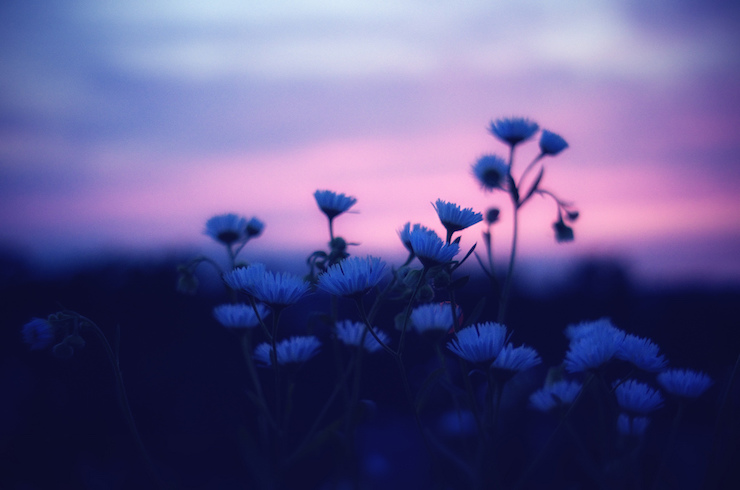
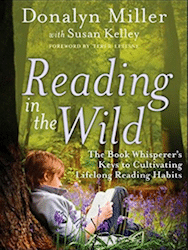
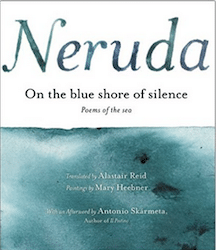
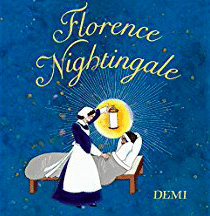
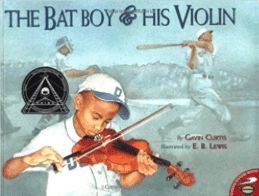
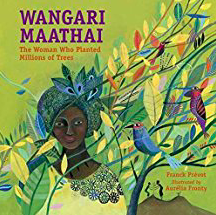
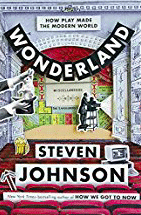

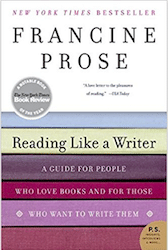
Glynn says
Yep, I fit all five characteristics.
Read in April:
Mystery / Suspense: A Cold Death in Amsterdam by Anita De Jager; The Thing Speaks for Itself by A.S.A. Dunphy; Last Words by Michael Koryta; The 6th Lamentation by William Brodrick; Death Sentence and Dead Level by Damien Boyd; The Allingham Casebook by Margery Allingham;
Children’s: The King’s Locket by Jacob Stull; A Treasury of Peter Rabbit and Other Stories by Beatrix Potter.
History and Non-fiction: The End of the Civil War 1865 by Mark Bradley; A Year in the South 1865 by Stephen Ash; Shattered: Inside the Doomed Clinton Campaign by Jonathan Allen and Amie Parnes.
Poetry; The Gospel in Gerard Manley Hopkins by Margaret Ellsberg; Say Something Back by Denise Riley; Afterland by Man Der Vang; Rayfish by Mary Hickman; From Ashes to Glory by Karin Fendick; Les Fauves by Barbara Crooker.
Faith: Forgiveness by Brian Jones; One: Unity in a Divided World by Deidra Riggs.
Fiction: The Bronte Plot by Katherine Real; The Chess Player by Her Koopman.
Reading right now: Oliver Twist by Charles Dickens.
Reading plan for May: Our Church by Roger Scruton; Olio by Tyehimba Jess; The Nature of the Beast by Louise Penny; Charles Dickens by Lucinda Dickens Hawksley; The Whole Harmonium by Paul Mariani; The Phantom of the Opera by Gaston Leroux; Recollections and Letters of General Robert E. Lee by Robert Edward Lee; The Cost of Our Silence by David Fiorazo; The Haunted Bookshop by Christopher Morley.
L.L. Barkat says
I figured you would! I love how much you read, and that you read in different directions than I do.
How did you like The King’s Locket, The Bronte Plot, and The Chess Player?
Glynn says
The King’s Locket tells the story of the fall – using kings and queens, knights and prices to do it. It’s well done. The Bronte Plot is a romance steeped in Victorian books, and it was OK (I think I was hoping for more). The Chess Player is an old Christmas story by a member of the Bruderhof, and I liked it.
I think my April favorite was A Year in the South 1865 by Stephen Ash. It uses the journals of four people — a former soldier, a wife and mother struggling to keep food on the table for her family, a slave, and a minister whose father owned a plantation in northern Mississippi — to tell the story of how ordinary people dealt with the devastation and social upheaval that was the South in 1865.
L.L. Barkat says
Sara and I were just discussing epistolary novels yesterday. Would you consider A Year in the South to be in that genre? (She loves Dracula and was telling me it’s an “epic epistolary novel.” Now there’s something I don’t think you hear every day 😉 ).
So I’m going to pass along this title to her, because she does so love to see how people use different ways to construct novels.
Megan Willome says
Sara is right about “Dracula.” I just read it a year or so ago.
May I say that I love that you both read children’s stuff too! I used two picture books in the workshop, one was for toddlers and is called “Tea Rex” by Molly Idle, which is styled as an etiquette book about inviting a T-Rex to tea. It’s hilarious. And I read “The Phantom Tollbooth” last month and wished I had read it to my kids.
April was a light reading month for me, with a move, a funeral out of state, and finishing the class, but I read two novels. One I hated, “A Gentleman in Moscow” by Amor Towles. The other I loved and read again, “News of the World” by Paulette Giles. Both were recommendations from friends. Also read Rilke’s “Letters to a Young Poet,” from which I’d previously only read excerpts. That one was a gift from a friend.
I am listening to an unabridged version of Gabriel Garcia Marques’ “One Hundred Years of Solitude.” I often use Audible for an older book or one I think might be hard. Listening is sometimes easier for me. That rec came after listening to a review on the “Overdue” podcast, which is a favorite that I often use for choosing reading material. LW might like it more than you two.
And a friend and I are following along with the “Harry Potter and the Sacred Text” podcast, reading and doing some sort of spiritual practice with the chapter of the week. We’ve done lectio divina, and now we’re hooked on florilegia. That has been a real addition to my life. (We’re in book 3, btw.)
L.L. Barkat says
I might need to put Dracula on my list. 🙂 And definitely Tea Rex.
Why did you stick with A Gentleman in Moscow?
All-time favorite, One Hundred Years of Solitude. Though I think you just really have to be in the right season-mood to read it.
Megan Willome says
Because the friend who recommended it wanted to know what I thought. Hate really is too strong a word. Sometimes I like to finish something I’m not enjoying to understand why it isn’t working for me: Is it something about the writing or is it just in the Not For Me category? I’m fascinated with how to tell a story, and I think I would have liked this one better if it were shorter–to borrow from the author, more Chekov, less Tolstoy.
Glad to hear the other is one of your favorites. Magical realism just makes sense to me.
Maureen says
I think I qualify for the full five. I tend to do a lot of reading in biography, memoir, and nonfiction, and art; however, in the past year, I have gone back to reading fiction.
I started in April and am still reading:
‘The Lady in Gold: The Extraordinary Tale of Gustav Klimt’s Masterpiece, Portrait of Adele Bloch-Bauer’ by Anne-Marie O’Connor (and I also go to see it in person at the Neue Gallery while in New York City last month).
‘Afterland’ by Mail Der Vang
Plus several volumes of ‘Collected Poems’ (e.g., Robert Lowell, Derek Walcott, Marie Ponsot)
Completed Reads:
‘Empty Chairs: Selected Poems’ by Liu Xia
‘Telepathologies’ by Corney Lamar Charleston
‘Robert Lowell, Setting the River on Fire: A Study of Genius, Mania, and Character’ by Kay Redfield Jamison
‘Still Pilgrim: Poems’ by Angela Alaimo O’Donnell (also reviewed this on my blog)
‘Whereas’ by Layli Long Soldier
‘Full Body Pleasure Suit’ by Elsbeth Pancrazi
‘Made for Goodness: And Why This Makes All the Difference’ by Desmond Tutu
Plus a bunch of chapbooks, including ‘mercy songs’ and ‘Two-Headed Boy’, both by the wonderful Kai Carlson-Wee and Anders Carlson-Wee; as well as issues of ‘Poetry’, ‘Poet Lore’, ‘Image’, ‘Bellevue Literary Review’ and assorted art periodicals
On my stack to read:
‘The Golden Shovel Anthology’
‘Float’ by Anne Carson
‘Anything That Burns You: A Portrait of Lola Ridge, Radical Poet’ by Terese Svoboda
‘Quaret for J. Robert Oppenheimer’ by Kelly Cherry
‘The Virginia State Colony for Epileptics and Feebleminded’ by Molly McCully Brown
‘Before Pictures’ by Douglas Crimp’ (Art)
‘The Glass Universe: How the Ladies of the Harvard Observatory Took the Measure of the Stars’ by Dava Sobel
‘Transit’ by Rachel Cusk (novel)
‘Exit West’ by Mohsin Hamid (novel)
‘This Close to Happy’ by Daphne Merkin (memoir)
L.L. Barkat says
Marvelous and intriguing list, Maureen. What were your top 3 faves from these?
Thinking to put a few of these on hold at the library. Probably:
The Lady in Gold: The Extraordinary Tale of Gustav Klimt’s Masterpiece
Made for Goodness: And Why This Makes All the Difference
The Virginia State Colony for Epileptics and Feebleminded
The Glass Universe: How the Ladies of the Harvard Observatory Took the Measure of the Stars
I mean, Dava Sobel! I had no idea she had something else I might want to delve into. When Sara was a tween, we read Sobel’s Planets book together. 🙂
I think the reason I stopped trying to read adult fiction much is that it’s hard to find something that I can enter into and not feel oppressed by. (So much contemporary fiction feels very fatalistic to me). So I’ve begun to read more middle grades fiction. But I do love the complexity of adult fiction over middle grades, of course. Maybe going back in time will help. Dracula calls yet again here. 🙂
Maureen says
My son gave me Sobel for Christmas, along with Anne Carson.
Of the poems, my favorites were ‘Whereas’, ‘Teleopathologies’, and ‘Still Pilgrim’.
I found insightful Jamison’s book on Lowell. It’s been described as a biography of his bipolar depression. I’ve read most everything Jamison has written. The Carlson-Wee brothers are excellent and deservedly rising in the poetry world; one of them is coming out with a full collection soon.
The Tutu book is a fast read. Having come through the horrors of apartheid, he has a remarkable perspective on people and life.
The book that got me back into fiction was ‘All the Light We Cannot See’. Another was the amazing novel ‘The Sympathizer’.
I’ve been reading recently widely in Middle Eastern lit and nonfiction.
If you can get down to NYC before November, be sure to go to the Neue (buy a ticket in advance). Seeing the Austrian masterpieces in person was marvelous.
Bethany R. says
What a juicy post—love this.
Yes, I carry a book in my purse and have a little rose-gold tote of 5-7 books ready to go for longer waits (like my son’s swimming practices).
Such an interesting point: ”But it’s worth asking ourselves why the preferences. And it’s worth engaging in occasional genre-switching, despite preferences, to shake things loose in our lives or our writing.”
I enjoyed reading through the others’ lists. Some of the books I’ve read portions of, or finished, in the last month or two are below.
YA/Kiddo Books:
‘Weslandia’ by Paul Fleischman (Love this)
‘The Poet’s Dog’ by Patricia MacLachlan (Such a beautiful story so far)
‘The Kindness Club, Chloe on the Bright Side’ by Courtney Sheinmel (Helpful for building empathy/social and emotional intelligence)
‘Junie B. Jones and the Stupid Smelly Bus’ by Barbara Park (A riot to hear my 7-year old daughter narrate and naturally act out – she got to stay up a little later because I wanted her to keep reading the next chapters)
‘The Silver Chair’ by C.S. Lewis (My son and I are currently reading this)
‘Dogsong’ by Gary Paulsen (Gripping. I’m reading this on my own – same author as that of ‘Hatchet’)
Humor:
‘Much Obliged, Jeeves’ by P.G. Wodehouse
‘The Stench of Honolulu’ by Jack Handy (Same writer as that of SNL’s ‘Deep Thoughts,’)
Poetry/Prose:
‘What the Light Was Like’ by Luci Shaw
‘Where the Sky Opens’ by dear Laurie Klein
‘Every Day Poems’ via T.S. Poetry Press
‘Rumors of Water’ by the inspiring L.L. Barkat
‘Everything That Makes You Mom’ by Laura Lynn Brown
‘Good Poems, American Places’ selected by Garrison Keillor
‘Poem-a-Day 365 Poems for Every Occasion’ selected by the Academy of American Poets
Will Willingham says
Such a contrast with my April. 🙂
I am one of those readers who does read a lot (compared with most people, but clearly not when compared with Laura, Glynn and Maureen 😉 ) but I also go through periods where I don’t read (much) and April was one such month for me. (Is that a wild reader characteristic? Pauses?) Particularly after a time of deep reading, and most especially after reading a novel that I really, really liked, I find anything else I pick up to be unsatisfying, and so I have to stop for a little bit. (That usually gets turned into watching through a Netflix series, and then I’ll go back to the books.)
That said, these are the books that are in process, neither finished nor abandoned:
We Are All Completely Beside Ourselves (Karen Joy Fowler)
What’s the Matter with Kansas (Thomas Frank)
Twilight of the Elites (Christopher Hayes)
My Own Words (Ruth Bader Ginsburg)
Unthinkable Tenderness (Juan Gelman)
Last Child in the Woods (Richard Louv)
Bethany R. says
LW, I can definitely relate to this: “Particularly after a time of deep reading, and most especially after reading a novel that I really, really liked, I find anything else I pick up to be unsatisfying, and so I have to stop for a little bit.”
Do you mind sharing one such book for you? 😀
Will Willingham says
The last book that did that to me was A Little Life by Hanya Yanagihara. I don’t normally recommend the book to people to read. It is beautifully written, but also a deeply painful book that is full of trauma upon trauma. So certainly not for everyone. But after reading it, I was done reading for some time. 🙂
Bethany R. says
Understood. It can be good to carry a book on internally for some time before cracking another open. Selah—
Sharon A Gibbs says
L.W., after reading the summary and some reviews, I can see why. It does sound like a very emotional book. I may put it on my next year’s reading list because this summer is about play, creativity, and fun. The Play It Forward workshop just started (Yay!) and I have a month-long coaching session in July. (Yay! Yay!)
L.L. Barkat says
A reading rhythm is something she also discusses—so, yes, for some wild readers they pause in between. I love the reason you tend to pause.
Also, Netflix might count as genre-switching. 😉
To that, I think that’s my way of pausing. I genre-switch after a good read.
Sharon A Gibbs says
(I’m glad Netflix counts.) I started watching Disney’s Atlantis: The Lost Empire last week. Still need to finish it. And I put Fantasia on my “Watch List.”
Any recommendations?
Megan Willome says
LW, I find that after reading something I love, I need to switch genres. So, after great novel? No novels next—nonfiction. Or one of the YA books on my list. Or try something totally different, which then sometimes becomes a whole new direction.
Sandra Heska King says
I think I’m an ADD reader. I have trouble finishing a book, not because it isn’t good, but because I get distracted by the next one. I also have a tendency to doze off whether I’m on the couch or in a rocking chair outside. (I don’t even try to read in bed any more.) So I have several on my plan to finish. I’m working on being a finisher. And I have a to-read list that’s miles long. I have a new writing desk and chair now, so I’m going to move there this month and try not to be too comfy.
I’ve also been one who, though I know how important reading is especially to a writer, have tried to fit it in rather than making it a priority like it was back in the day. So that’s changing for me thanks to a certain coach who has given me permission to do so.
I do think I fit all the categories. I always have a bag of books with me, just because I’m never sure what I’ll feel like reading. Plus I have a whole wicker laundry basket full of reading for this project I’m working on.
This past week (can we count this past week?), I decided to read at least one children’s book a day for National Children’s Book Month, and I want to continue that. I had a kid’s books that I divvied up between the grands when we moved, but I did keep a 3-volume set of The World Treasury of Children’s Literature.
So I’ve read:
The Ballad of the Harp-Weaver by Edna St. Vincent Millay (again)
Sleep Sweet by Patsy Clairmont (again)
Where the Wild Things are by Maurice Sendak (again)
Daisy and Josephine by Melissa Gilbert (again)
A Hole is to Dig by Ruth Krauss (first time)
A Kiss for Little Bear by Else Holmelund Minarik (again)
Mr. Gumpy’s Motor Car by John Burningham (first time)
And I also got to see and hear Megan read her books to us in the workshop.
I read The Novelist again as part of that workshop by L.L. Barkat. You may know her.
Still Pilgrim by Angela Alaimo O’Donnell
The Jubilee by John Blase
(though mostly I dip into poetry, not reading the entire volume at once and often go back to the same ones like I did with Mary Oliver and Luci Shaw land Naomi Shihab Nye last month, this month, every month)
Several other books are still in progress, including the ones in the basket and:
The Places in Between by Rory Stewart
Burnt Toast by Teri Hatcher
And I never did quite finish The Wild Swans or Curious, so those will be on this month’s list. I like how Glynn organizes his reading into categories or genres.
Bethany says
I have the same trouble with finishing books, Sandra! I have a bookmark in about seven at once.
“You may know her.” 😉
I love the Little Bear books.
Sandra Heska King says
I usually have a pencil or a pen stuck in them. 😉
L.L. Barkat says
I didn’t include it, but “Re-reading Favorites” is one form of preferences she discusses. That’s you! 🙂
Sandra Heska King says
Which explains in part why I never have enough shelf space. Books are friends.
😀 😀
Sharon A Gibbs says
Pleased to see that I fit all five characteristics, with a recent genre-switching to children’s books and more fiction. (Nonfiction had been my mainstay for many years.) More recently, poetry books from the library are piled everywhere! <3 A conversation during the TSP Tea Time: Writing Our Leaves and Our Lives workshop prompted me to download "Frankenstein" by Mary Shelley. Sounds like this conversation is my nudge to start the book!
I love the thought of shaking things loose in our lives or our writing! 🙂
While many of my friends have a fetish for shoes and clothes, I have a weakness for books. Stacked books create columns on my bedstand and living room end table(s). I am always in the middle of a few at one time. I NEVER leave home without one.
I used to keep a running Word doc list of "Books Read." Thinking I need to look at that again.
A few years ago, we dumped the Time Warner cable service. Reading and conversations about books take on a meaningful place in our living room.
Finished in April:
"Miss Rumphius" by Barbara Cooney (several times: silent, aloud alone, and aloud with my husband. Fun!)
"On the Blue Shore of Silence" by Pablo Neruda (several times, as above)
"Where the Wild Things Are" by Maurice Sendak (again)
(A BIG thanks to L.L.Barkat.)
"The Novelist" (A deep re-read during Tea Leaves TSP workshop. I highly recommend this one in a book club setting.)
"The Jubilee" by John Blase
"A Thousand Mornings" by Mary Oliver
"Bel Canto" by Anne Patchett (Audible)
I loved hearing Megan's calming voice read two books to us in our Tea Time: Writing Our Leaves and Our Lives workshop: "Tea Rex" by Molly Idle and "Two Friends" by Dean Robbins
I re-read "Casual, a little book of jeans poems & photos."
Sliced (Maybe for another time):
"Everyone Brave is Forgiven" by Chris Cleave
Underway:
"Playdates with God" by Laura Boggess
"New and Selected Poems" by Mary Oliver
"Ultramarine" by Raymond Carver
"Journal Spilling" by Diana Trout
Want to read:
"The Wild Swans" by Jackie Morris
"Ordinary Genius" by Kim Addonizio
"Neruda's Memoirs: Poems" by Maureen Doallas
"Frankenstein"
"A Year in the South" and "The Creative Habit: Learn It and Use It for Life" sound great, too.
(Can I just retire to read and write?)
Up for June: I initiated a book club which launches in June (with a tea party included!! Yay!). We voted on "Ordinary Grace" by William Kent Kruger.
So many wonderful reading suggestions! My plan for the future? Continue to genre-switch.
L.L., thank you for stirring these thoughts.
Megan Willome says
🙂
Bethany R. says
Sharon, I had fun reading through your list of books read/to be read. 🙂 I love that you initiated a book club that includes a tea party! 🙂 That makes me wonder, what’s your favorite kind of tea? (I like black teas with some kind of fruit or floral element in them.)
Sharon A Gibbs says
Thanks, Bethany!
Megan Willome got me onto the Jasmine Greens and Silver Needle, but I also like Darjeeling and Plum Deluxe’s Pick Me Up Blend Oolong Tea (with maple and almond).
I used to carry books in my bag for my sons, too. 🙂 More than once, I opened books in long lines and waiting rooms, idling cars and once on a sidewalk curb (car broke down). Books saved our lives and patience.
How wonderful that you also read Humor. I may need to tap into that sort of reading.